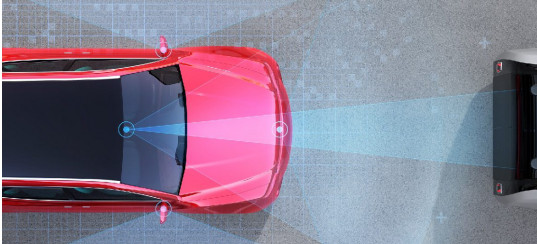What are the requirements for high-quality integrated circuits for automotive millimeter-wave radar?
As the new generation of passenger cars increasingly rely on millimeter-wave radar technology to improve the safety of drivers and passengers, the error tolerance left for these advanced safety systems has become smaller and smaller. However, the millimeter wave radar microcontroller (MCU) as the core of the active safety system, the subsystems and applications it serves are increasingly complex, and often work in harsh environmental conditions, which further reduces the error of millimeter wave radar electronic devices The tolerance is compressed to the limit.

For example, in the hot summer, when the car is idling, the temperature of the radar MCU that controls the automatic emergency braking (AEB) system will gradually increase-when the car accelerates, the cooling structure on the board will dissipate heat, and AEB The function must not have any delay. The system must be up and running in real time, responding to changing and challenging driving conditions in real time. Even aside from the potential safety hazards caused by delayed response or system failure, when the radar system fails, at least heavy vehicle repairs are required, which negatively affects customer satisfaction.
To avoid such problems, the MCU itself, the MCU manufacturing process, and the target subsystem containing the MCU must have the highest possible quality. Next, this article will elaborate on several factors that affect the quality of millimeter-wave radar MCUs, as well as improvement opportunities adopted by industry leaders such as NXP.
Understand customer use cases
As the "brain" of the active safety system, the millimeter-wave radar MCU needs to provide accurate data consistently under all circumstances. At the level of electronic components, NXP has demonstrated how intermittent system failures can be effectively mitigated within the MCU: redundant cores and memory banks can ensure maximum data integrity. Calculations performed on one core will be verified by other cores, and the decision tree will make corresponding arbitrations. A similar redundancy mechanism is usually built in the subsystem where the MCU is located, thereby helping to identify and eliminate errors on multiple layers to prevent errors from propagating to other on-board systems.
The key element to achieve this result is that we have to understand customer use cases very carefully, infer and reconstruct the parameters of customer test cases and software functions, and finally verify the MCU to ensure that they can play a role in these precise use cases. The more we know about customer use cases, the more efficiently we can build verification and test suites to fully test our system under various conditions. What is the customer's startup sequence? What is the utilization rate of each core? What commands do they run? Understanding these issues helps to fully test the MCU, analyze the resulting data and feed that data back to your own development workflow to ensure that the next generation of products is continuously upgraded.

Supplier management and collaboration quality improvement
In terms of managing chip manufacturing partners and ensuring and improving the quality of MCUs, NXP firmly believes in this principle: "Trust is necessary, but verification is also necessary." NXP itself has rich experience in fab operations and can screen out the available The supplier with the strictest process discipline level. The technological accumulation over the years has also given us the ability to guide suppliers to complete any necessary process improvements.
This requires suppliers to maintain close collaboration and communication from the senior management to the engineering department. At the same time, they can understand that NXP will be deeply involved in the testing, verification and technical characterization phases. We will intervene whenever necessary. Before starting the production process, we will test the product on the target fab production line, define the differences, customize the process as needed, and strive to do the necessary work to achieve excellent process consistency, thereby minimizing the impact Factors of MCU quality.
Communication and transparency
NXP’s own manufacturing expertise also comes in handy when suppliers have quality issues that need to be resolved as quickly and comprehensively as possible. We work closely with our suppliers to take quick action, and identify problems as soon as they occur, quickly control them and perform the necessary root cause analysis. When a problem occurs, NXP has a complete processing flow: close the corresponding production line, and limit the problem to the smallest material subset as much as possible.
Equally important, NXP will proactively inform customers of these manufacturing issues in a timely manner. When a quality defect is detected, we do not consider the "acceptable threshold" and do not accept the convention that the product can fail several times, but directly light up the red light. The purpose of this is to communicate and repair the problem as early as possible to avoid the affected device from affecting the end customer. In this regard, we have used a very detailed and comprehensive traceability system to allow us to track the entire process of each MCU from production to delivery.
Continuous improvement of quality
Quality performance is usually measured in parts per million (PPM) indicators, that is, the number of defective devices in a million devices, which is the consensus of the industry. Of course, the ultimate goal is to reduce the million defect rate to zero, but mass production is difficult to achieve.
NXP implements a continuous quality improvement culture in all internal and external factories. This reflects our determination to meet and exceed customer quality expectations. As we often say, superior quality is a journey, not an end. In this journey, we can proudly say that since the ADAS mass production began in 2013, our PPM indicators have been optimized by more than 60%, which is the progress that NXP continues to pursue.
If you want to know more, our website has product specifications for automotive millimeter-wave radar, you can go to ALLICDATA ELECTRONICS LIMITED to get more information

